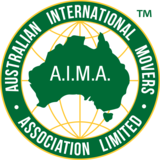Traditionally in Australia port terminal operators have been engaged and paid by global steamship lines for the cost of the terminal handling of containers coming into and out of the port. The steamship lines in turn passed on to cargo importers and exporters these terminal handling charges which were published and known by shippers. Whilst not always completely uniform between different terminals, different shipping lines and different ports, these charges were relatively transparent and consistent.
With the introduction of additional terminals at the Ports in Sydney, Melbourne and Brisbane in recent years to cater for expected future capacity needs, increasing the terminal operators in those cities from 2 to 3, coupled with a subsequent reduction in container throughput volumes, there has been increased competition between the privately-owned terminal operators to acquire their shipping line client business.
This competition has resulted in the shipping lines seemingly negotiating favourable terms for terminal handling of their cargo (which unfortunately has not been reflected in any reduction to shippers in their OTHC/DTHC charges), but has left the terminal operators with lower than expected income and seeking to supplement this income in other ways.
A couple of years ago Australian port terminal operators started introducing modest “infrastructure” charges purporting that these charges were needed to fund future infrastructure needs at their port(s) to meet expected capacity. Initially these infrastructure charges were only a few dollars ($4 or $5 per container) but realising this was an unregulated area, the terminal operators have in the past year or so been regularly increasing the amounts each time seemingly by a greater amount.
Traditionally origin terminal handling charges (OTHC) and destination terminal handling charges (DTHC) were transparent amounts and recovered by the shipping lines from the cargo shippers and consignees.
Now there are 2 layers of DTHC/OTHC, one payable to the shipping line and another one (tentatively called Infrastructure charges) payable to the Port Terminal Operator. These Port Terminal infrastructure charges (some terminal operators are now calling them by other names such as “terminal access charges”) are being levied directly on cargo importers or exporters and do not form part of the DTHC or OTHC payable to the steamship line.
Industry Bodies like AIMA, FTA (Freight Trade Alliance) and APSA (Australian Peak Shippers Association) have been protesting against these infrastructure charges and have been (and continue to) lobbying State and Federal Government Bodies to address this uncontrolled additional imposts which are seriously harming Australian importers and exporters (many of whom are already seriously affected by long term drought conditions) as well as in AIMA’s case being an unreasonable impost on Australian Movers as they have been forced to absorb charges normally paid to steamship lines as part of the OTC/DTHC and recoverable from overseas shippers.
The quantum of these charges particularly in Sydney, Melbourne and Brisbane has become unsustainable and in some cases has reached around $150 per container. In addition to these port infrastructure (or terminal access) charges, terminal operators have required Australian importers and exporters to utilise third party booking software systems to book slots to enable (the only) access for their cargo to and from the port. Again the cost of these booking platforms for each container commenced a few years ago at very modest levels but in many cases now have dramatically increased, reaching figures that cannot continue to be absorbed by Australian importers and exporters.
Whilst AIMA in conjunction with FTA and APSA will continue to lobby Governments regarding these unreasonable imposts, it is possible Australian Movers will be forced to recover the additional port infrastructure and terminal booking charges from their clients and overseas mover partners, as without payment of these charges, they have no alternative way of moving or accessing their cargo through the ports.
Philip Gordon
Chairman
Australian International Movers Association Limited
